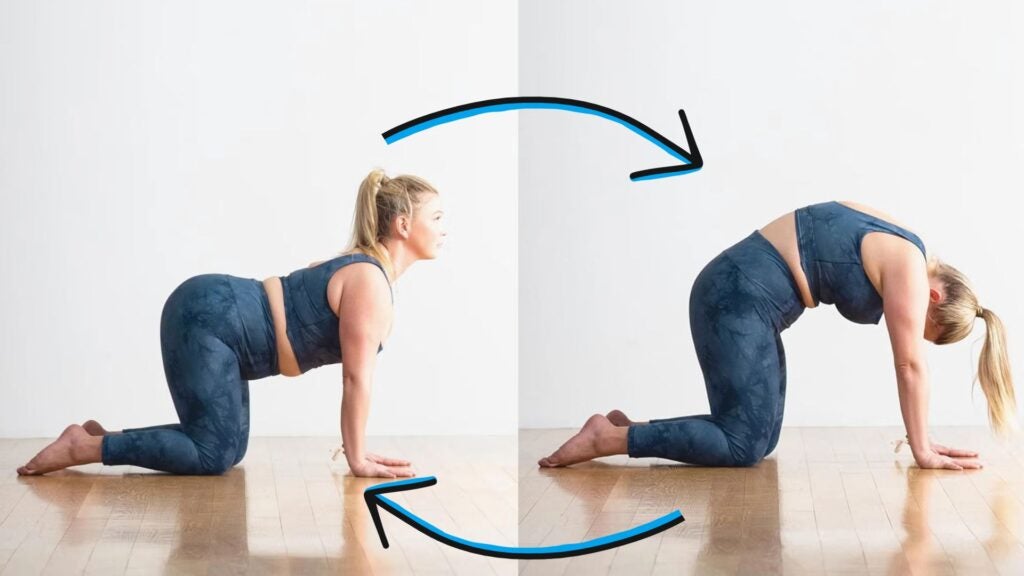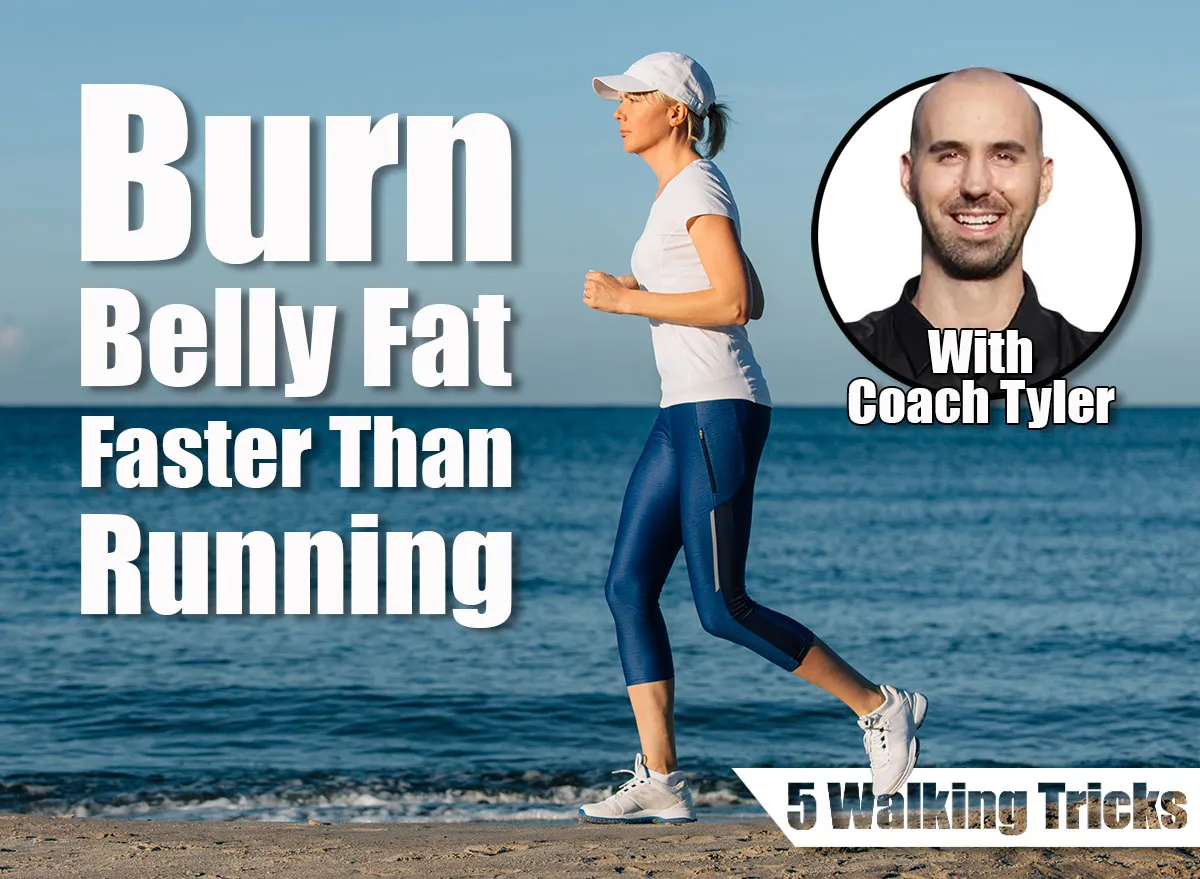“], “filter”: { “nextExceptions”: “img, blockquote, div”, “nextContainsExceptions”: “img, blockquote, a.btn, a.o-button”} }”>
Heading out the door? Read this article on the new Outside+ app available now on iOS devices for members!
>”,”name”:”in-content-cta”,”type”:”link”}}”>Download the app.
Cat and Cow. Shoulderstand and Fish Pose. Forward folds and backbends. What do these pairs of postures have in common? They’re all considered counterposes in yoga.
Counterposes ask your body to come into a position that, in some way, counters the one you did prior. You might have even heard yoga teachers say that a counterpose “balances” or “neutralizes” the effects of a previous pose. And you might have found yourself wondering how necessary they actually are.
In fact, counterposing can be divisive; some yoga instructors religiously practice specific poses in a certain order, while others take a more freeform approach to sequences, sometimes skipping counterposes entirely. Are there strict rules to counterposing? And, if so, does breaking them compromise your safety?
What Are Counterposes and What Are The Benefits?
If a yoga pose takes your body into a specific position, its counterpose takes your body in more or less the opposite position. For instance, in Camel Pose, the arms move back (shoulder extension), the shoulder blades move toward each other (retraction), and the chest lifts (spinal extension). On the opposite end of that continuum is Eagle Pose, in which the arms move forward (shoulder flexion), the shoulder blades widen away from each other (protraction), and the upper back might round slightly (spinal flexion).
However, counterposing isn’t always about exact anatomical positioning—it’s actually quite subjective.
They Balance the Body’s Efforts
Inviting the body to explore a range of possible movements, not just movement in one direction, can help your overall mobility. Not only do you want your spine to round (think Cat Pose), you also want it to arch (Cow Pose). Practicing counterposes is one way to contribute to a sense of balanced muscular effort and challenge the joints.
Even repeating a pose on the opposite side can be considered a counterpose, says Leslie Kaminoff, co-author of the best-selling Yoga Anatomy. “Twists are their own counterposes, like side bends,” he says. “I twist to the right, then I twist to the left. Or I side bend to the right, then I side bend to the left.”
Plus, they feel good. That’s the opinion of Nam Chanterrwyn, whose advanced yoga teacher trainings focus on anatomy and biomechanics. After an exhilarating pose such as Headstand, it can feel wonderful to relax the body in Child’s Pose (Balasana) or Hero’s Pose (Virasana). “I start to learn that next time I do that hard thing, I get to look forward to the feel-good thing,” explains Chanterrwyn.
They Offer Energetic Benefits
Counterposing may have just as much to do with finding energetic balance than a strict physical opposite. “Counterposes can be playful,” says longtime teacher and teacher trainer Annie Carpenter, founder of SmartFLOW Yoga. They don’t have to be formulaic, and despite the name, they don’t have to be actual poses.
To counterpose an active pose such as Camel, Carpenter might suggest rolling the shoulders forward and back, pressing the palms together in prayer position (anjali mudra), or lying prone on a bolster in Crocodile Pose (Makarasana), which offers a moment for passivity.
They Help Teachers Sequence
To Kaminoff counterposing is also a valuable practice for newer teachers—a tool to help structure their sequences. Learning that Child’s Pose is a counterpose for Sphinx can give them a smooth way to transition between possible movements.
The Debate Around Counterposing—Explained
There are some common ideas that people have surrounding counterposing that are worth a closer look.
Counterposes Aren’t Essential
Despite its potential benefits, counterposing is an inherited narrative that is worth questioning, according to Kaminoff. “I think it’s based on the misconception that the things we’re doing in asana practice are so powerful or potentially damaging that their negative effects need to be neutralized.”
But there is no risk to not counterposing, adds Kaminoff.
Rachel Land, Yoga Medicine instructor and podcaster, agrees that the effects of a pose don’t need neutralizing. “I see counterposing as being more about student comfort than safety, because any effect a pose has on the muscles and connective tissues in the context of a single pose is temporary and would rebalance itself in time once we exit.”
Yoga Classes Aren’t Perfectly Balanced (And That’s Okay)
To Land, a downside of the counterpose model is that it implies that the physical practice of yoga is balanced, and yet, we do some movements in yoga much more than we do others. Land calls attention to how often teachers cue hip-openers such as Bound Angle Pose and Easy Pose. By contrast, there are hardly any poses that ask us to draw the legs in as in Eagle Pose—and even fewer in which the legs are internally rotated as in Hero Pose, says Land. “Hip-closers isn’t even a common term,” she says.
Counterposing, seen through this lens, is not a matter of safety, but something you are welcome to do if you want to, understanding that perfect balance might be elusive, even in a yoga class.
Taking a Forward Fold After a Backbend Depends on the Student
Although some teachers cue backbends and forward-folds back to back—Cat and Cow, Shoulderstand and Fish Pose, Cobra and Child’s Pose, sometimes those same teachers advise students not to hug the knees in between backbends, and not to, for instance, practice Seated Forward Bend (Paschimottanasana) immediately after Upward-Facing Bow (Urdhva Dhanurasana).
Is moving between spinal extension and flexion really that dangerous?
Many students may have built up the resilience to go back and forth between these two types of positions safely, says Chanterrwyn. “I don’t find that it’s dangerous at all to go straight from a back bend to a forward fold, back to a backbend, to a forward fold,” he says. “Unless you’re doing both things in a very extreme and unsupported way.”
However, for those with genetically hyperflexible bodies, it can be a different story. These students often benefit from practicing with more restraint. In Kaminoff’s view, the problem lies not so much in moving from one extreme to the other but moving to extremes at all. According to Kaminoff, those with collagen disorders, such as Marfan syndrome or Ehlers-Danlos syndrome, might experience some instability that predisposes them to wear-and-tear injuries if they push too far. “They could develop chronic joint issues, chronic joint inflammation, degenerative arthritis in the joints,” he says.
Carpenter points out that as we age, there is less intervertebral space and the spinal disks flatten and harden. Conditions such as arthritis can begin to restrict some ranges of joint movement. Carpenter, who has practiced for 50 years, says that after a backbend, she typically prefers to practice a neutral position of the spine such as Plank or sit in Staff Pose (Dandasana) for a few breaths before folding forward.
So…Should You Counterpose or Not?
Ultimately, it comes down to personal preference and what your or your student’s body is comfortable with. There is no rule that works for everyone.
One approach to counterposing might be to let the students decide what, if anything, they want to do. Often, after challenging poses, students will instinctively move in ways that feel good, especially if they’re given time to do so.
When Kaminoff is teaching, he allows “spaces of inquiry”—literal wiggle room in his sequences—for students to check in with themselves and exercise their own agency. Rather than prescribing counterposes, he encourages students to choose the movements they need to be comfortable. He calls this “free-form counterposing.”
“They’re going to hug their knees to their chest. They’re going to rock back and forth. They’re going to jiggle themselves out, or work out whatever kinks have accumulated from the thing that they’ve just done,” says Kaminoff.
Students might also realize they want to do nothing. According to Kaminoff, That’s a student who’s likely thinking “I feel really good from what we just did. And I just want to keep feeling it.”
You can’t have a perfect counterpose for everything in yoga class. Inevitably, some movements will be left out.
Notice your habits and how well they are serving you, Carpenter suggests. After a backbend, for instance, take a moment to get curious about how you practiced the previous pose and ask yourself, “Did I go too far?” or “How do I feel now?” You can then make a decision about how you want to approach what comes next.
Perhaps a mindful approach to counterposing can serve you in daily life as well, inviting you to notice how you feel in the moment. What do you need to create more balance or ease, especially after facing a challenge? Sometimes, the answer may be nothing. You may feel good as you are and have everything you need.











Leave a Reply